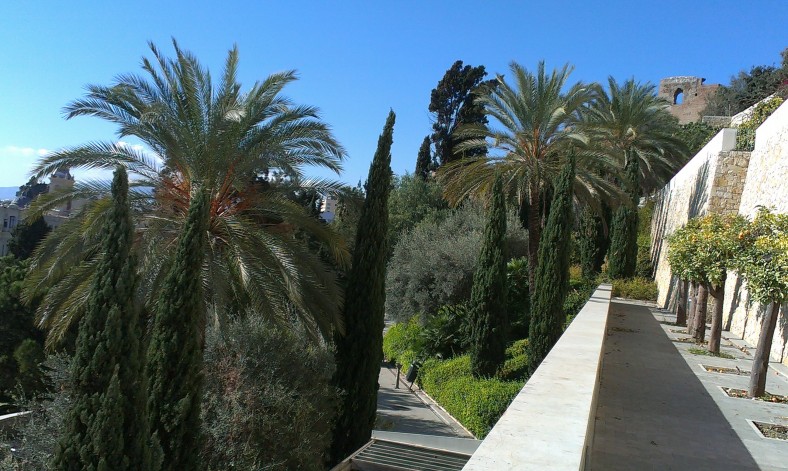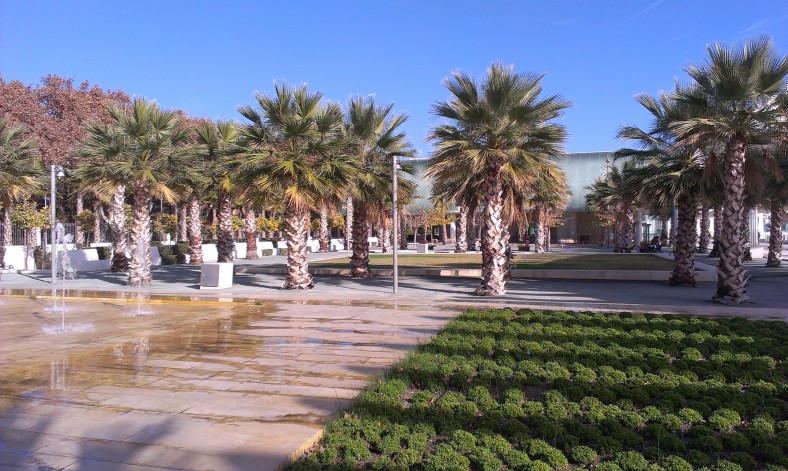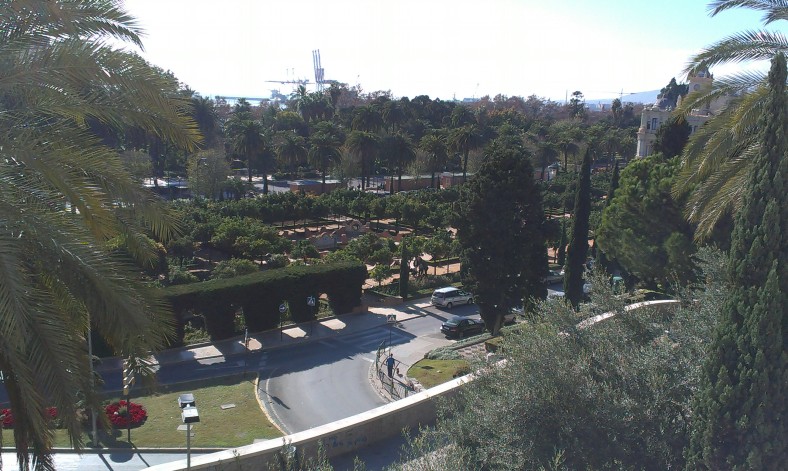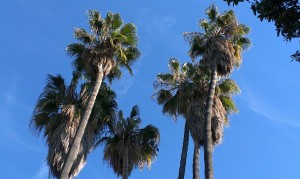
Improved lower pathway area bordering the Paseo de las Curas
“El Proyecto de Rehabilitacion del Parque de Malaga y su entorno”
In July 2005 Malaga City Council announced its plans to redevelop the Parque de Malaga, and in the following October an initial budget of some 9.7m euros was approved for the works. It was felt that, after 100 years of history and many years of neglect, it was necessary to make a critical assessment (“hacer un analisis critico”) of the current state of the park, and to look at the required changes and opportunities for improvement in the century which we live (“el siglo que vivimos”). The project was under the direction of reknowned archtect Pau Soler Serratosa.
There were several practical and visionary objectives, amongst them;
- Resolve the “dysfunctionalities” that had accumulated over the years.
- Cope with the increasing levels of traffic (human and vehicular).
- Improve pedestrian access to adjoining zones and public buildings.
- Improve paving, lighting and seating.
- Renovate the theatre area, cafes, and the play areas.
- Limit car parking, introduce bus and cycle lanes, improve bus stops and increase disabled access.
And from a horticultural perspective…
- Initiate an intense campaign of plant restoration.
- Eliminate plants which were invasive or in poor condition.
- Incorporate new species which would enrich the botanical collection.
- Introduce a computer controlled watering system to optimise water use.
- Redesign and repair parterres, walls, monuments, and areas of hedging…..And….
- Return the park to something near its original style and atmosphere; and to the level of horticultural and botanical splendour for which it was created, and enjoyed, in the early years of the C20th.
In order to minimise inconvenience, the area (which included the nearby Jardines Pedro Luis Alonso) was divided into 5 zones,with the work to take place over 13 months, beginning on 13th January 2006. The budget, meanwhile, had increased to over 13m euros, but nevertheless the remodelled park was finally “unveiled” on the 31st March 2007.
For those of you interested in the figures….The project had involved 57,506 sq. m. of paving; 166 new units of lighting; 130 new stone benches and 240 wooden; 836 acts of tree surgery on large specimens; the transplanting of 768 trees and large shrubs; the planting of a further 652; and the introduction of no less than 71,720 small shrubs, groundcover and bedding plants into the area (source: Malaga City Council documents)
However, the whole redevelopment was not without controversy. In June 2006 the opposition PSOE group on the council put a brake to the project, on the grounds that it involved the removal of 200 trees, many of great botanical interest, which were understandably thought to be an essential part of the heritage of the city. Furthermore many of the new specimens being introduced were viewed as some of the more “commonly seen” species from around the Mediterranean, thus, it was argued, devaluing somewhat the park’s status. Nonetheless the city council insisted that the removal of the trees was essential due to age, poor condition, and in great part to the threat of the Red Palm Weevil (see separate page) which was affecting many of them and which urgently needed to be controlled.
Whether the park has been “devalued” is debatable. On my visits to the Parque in 2010 and 2012 I think it was maybe true that, initially at least, the area had perhaps not been fully replanted with new, rarer botanical specimens, but there was certainly plenty of stylish groundcover and seasonal plants to compensate. Fast forward to 2015 and it’s clear from a walk around – and a glance at the new guidebook – that many new species, especially Palms, have been steadily introduced over the past few years, and this is a credit to the Ayuntamiento and the local Park and Gardens services. It’s also clear that this planting continues apace.
As gardeners we know that if an area suffers many years of neglect, then hard pruning or removal of older specimens allows light, air and moisture through for other plants to thrive. Gardens are evolving, living things, nothing lasts forever, and it was certainly true that after 100 years, the Parque had maybe reached the stage where some radical pruning and replanting would only have been of benefit.
And certainly, in terms of overcoming the “dysfunctionalities” of the area, the redevelopment has done it’s best to remedy these through improved Pedestrian access and facilities. At least, it has achieved as much as is possible in the face of the increasingly busy road schemes of the Paseo del Parque and Paseo de Los Curas, and this is an issue which is covered further in other pages of this blog ..
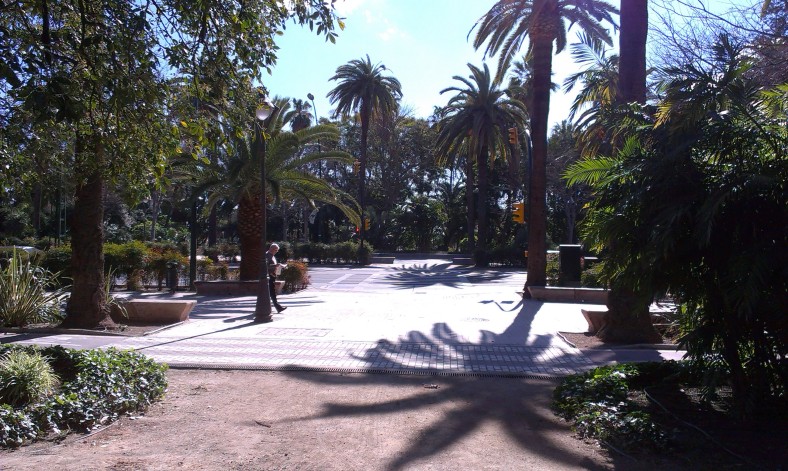
Wider access areas and pedestrian crossings over the Paseo del Parque main road have gone some way to improving the link between the inner and outer sections, and invite the visitor to head towards the harbour, despite the heavy traffic.
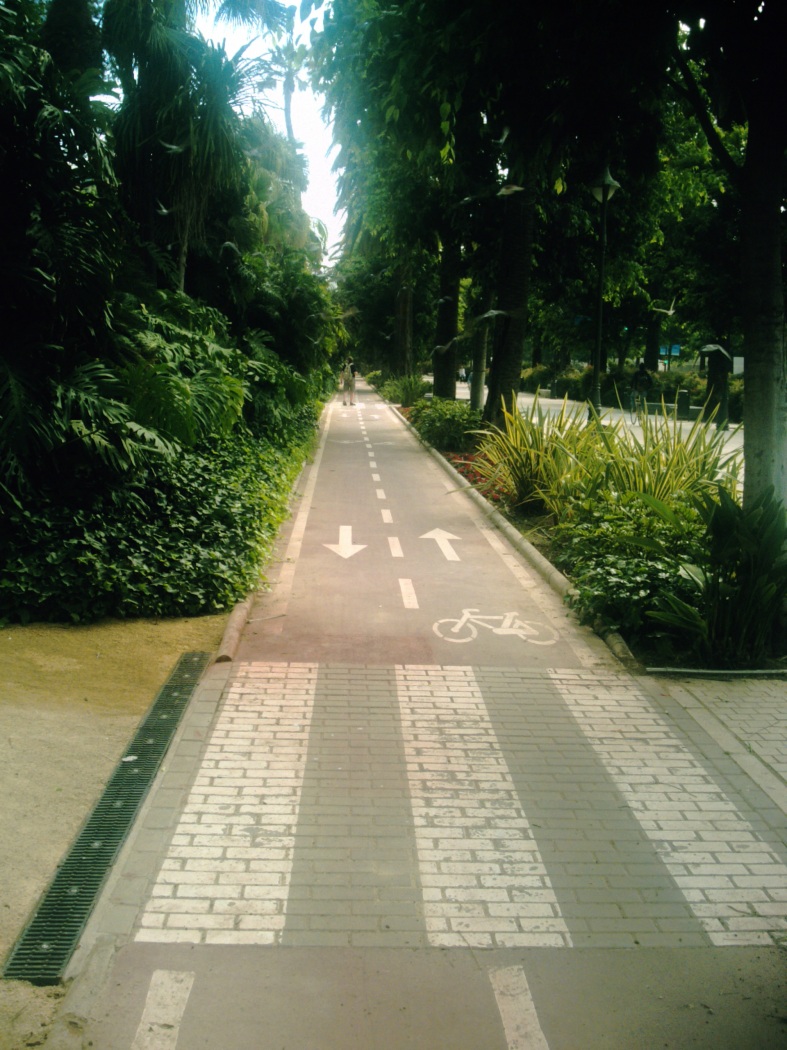
Cycleway in the inner section of the Parque
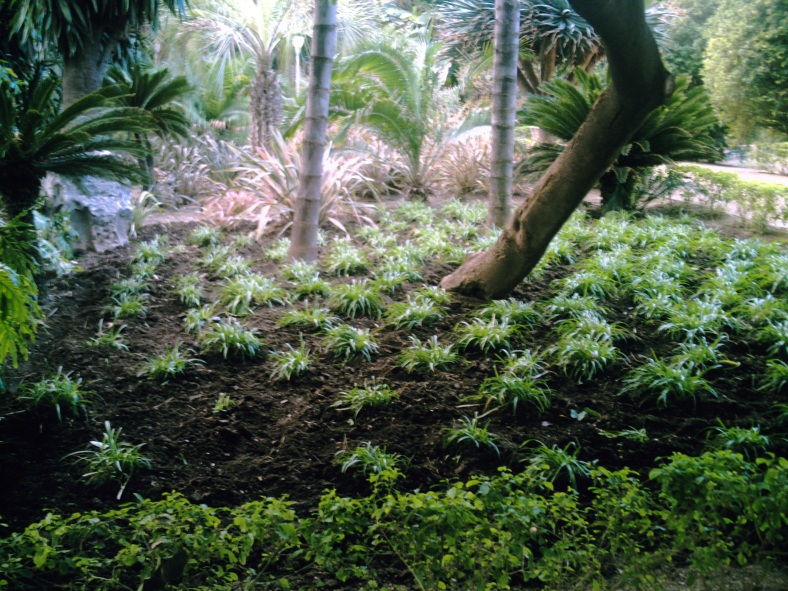
The work continues….Freshly planted and renewed areas are a regular feature within the Park.

Borders are now edged either with low hedging or (as here) with closely clipped Hedera (Ivy) which forms a neat, dense mat.
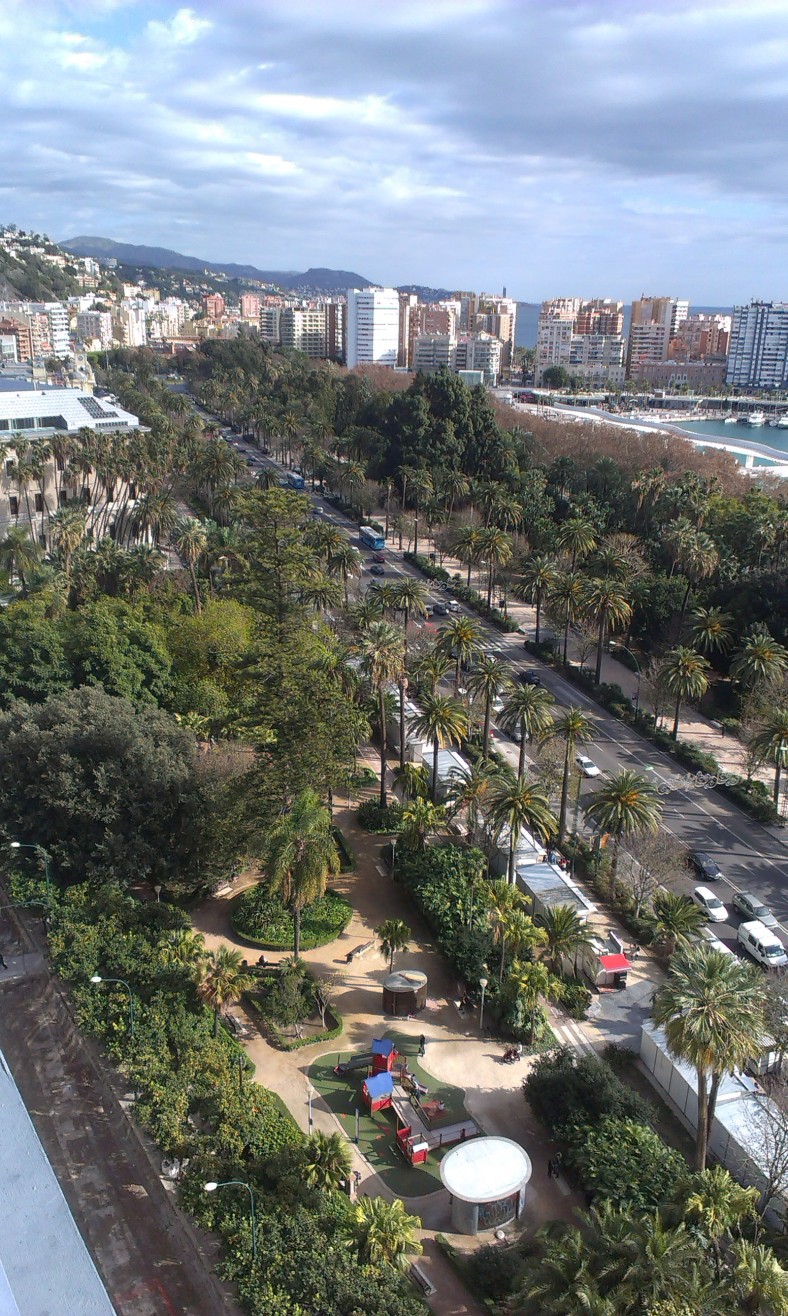
The redevelopment of the Parque has run in tandem with major improvements to surrounding areas in Malaga city centre, including better access to the hillside Castle through new landscaped pathways (images below) and of course the transformation of the harbourside area (see the “Palmeral de las Sorpresas” section of this blog).
